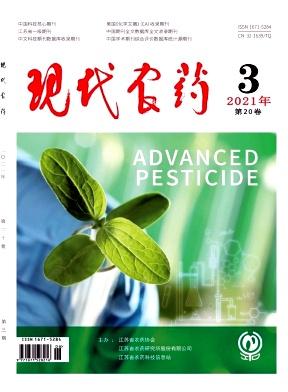Neonicotinoid Sunflower Seed Treatment, While Not Detected in Pollen and Nectar, Still Impacts Wild Bees and Crop Yield
引用次数: 1
Abstract
Neonicotinoid seed treatments are commonly used in agricultural production even though their benefit to crop yield and their impact on pollinators, particularly wild bees, remains unclear. Using an on-farm matched pair design in which half of each field was sown with thiamethoxam treated seed and half without, we assessed honey bee and wild bee exposure to pesticides in sunflower fields by analyzing pesticide residues in field soil, sunflower pollen and nectar, pollen-foraging and nectar-foraging honey bees, and a sunflower specialist wild bee (Melissodes agilis). We also quantified the effects of thiamethoxam-treated seed on wild bee biodiversity and crop yield. M. agilis abundance was significantly lower with thiamethoxam treatment and overall wild bee abundance trending lower but was not significantly different. Furthermore, crop yield was significantly lower in plots with thiamethoxam treatment, even though thiamethoxam was only detected at low concentrations in one soil sample (and its primary metabolite, clothianidin, was never detected). Conversely, wild bee richness was significantly higher and diversity was marginally higher with thiamethoxam treatment. Nectar volumes harvested from the nectar-foraging honey bees were also significantly higher with thiamethoxam treatment. Several pesticides that were not used in the sunflower fields were detected in our samples, some of which are known to be deleterious to bee health, highlighting the importance of the landscape scale in the assessment of pesticide exposure for bees. Overall, our results suggest that thiamethoxam seed treatments may negatively impact wild bee pollination services in sunflower. Importantly, this study highlights the advantages of the inclusion of other metrics, such as biodiversity or behavior, in pesticide risk analysis, as pesticide residue analysis, as an independent metric, may erroneously miss the impacts of field realistic pesticide exposure on bees.葵花籽处理虽然在花粉和花蜜中未检测到新烟碱,但仍对野生蜜蜂和作物产量产生影响
新烟碱类种子处理通常用于农业生产,尽管其对作物产量的益处及其对传粉媒介,特别是野生蜜蜂的影响尚不清楚。采用田间配对设计,每片田一半播种噻虫脒处理过的种子,另一半未播种,我们通过分析田间土壤中的农药残留、向日葵花粉和花蜜、采花粉和采花蜜的蜜蜂以及向日葵专业野生蜜蜂(Melissodes agilis)来评估向日葵田蜜蜂和野生蜜蜂对农药的暴露情况。我们还量化了噻虫嗪处理种子对野生蜜蜂生物多样性和作物产量的影响。噻虫嗪处理显著降低了野蜂的丰度,总体呈下降趋势,但差异不显著。此外,使用噻虫嗪处理的地块的作物产量显著降低,尽管只在一个土壤样品中检测到低浓度的噻虫嗪(而且从未检测到其主要代谢物噻虫胺)。相反,噻虫嗪处理的野生蜜蜂丰富度显著增加,多样性略高。用噻虫嗪处理后,采蜜蜜蜂的花蜜量也显著增加。在我们的样本中发现了几种未用于向日葵田的杀虫剂,其中一些已知对蜜蜂健康有害,这突出了景观尺度在评估蜜蜂接触杀虫剂方面的重要性。综上所述,本研究结果表明噻虫嗪种子处理可能对向日葵野生蜜蜂授粉服务产生负面影响。重要的是,本研究强调了在农药风险分析中纳入其他指标(如生物多样性或行为)的优势,因为农药残留分析作为一个独立的指标,可能会错误地忽略现场实际农药暴露对蜜蜂的影响。
本文章由计算机程序翻译,如有差异,请以英文原文为准。
求助全文
约1分钟内获得全文
求助全文

 求助内容:
求助内容: 应助结果提醒方式:
应助结果提醒方式:


